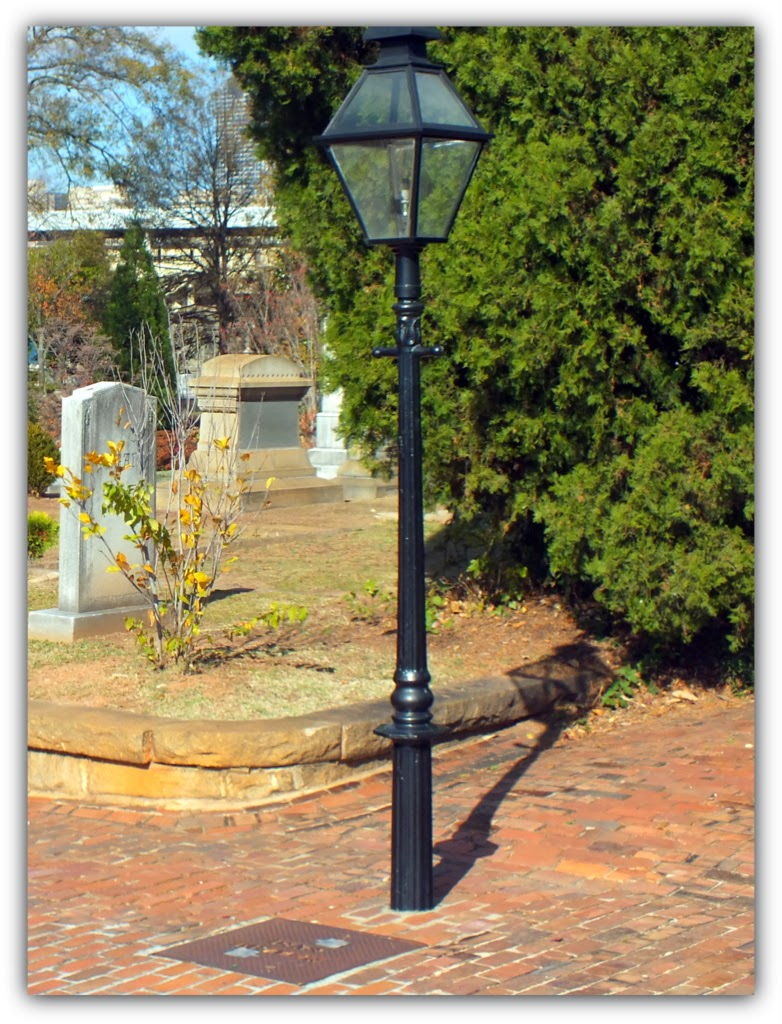I think the past is still with us in a tangible way such
as the Tullie Smith house or the Wren’s Nest, but yes – sometimes we do have to
be satisfied with historical memories via the written word or images presenting
places long gone like the grand mansions that lined Peachtree Street once upon
a time.
Then there ARE those situations where bits and pieces
remain.
I find those fragments of history to be the most
fascinating because they hide in the contemporary landscape with most never
realizing they are passing a gateway to Atlanta’s past each and every day.
Take the three streetlights that stand in Piedmont Park near Park Drive Bridge, for example.
The streetlights stand as a testament to Atlanta’s history
dating back to 1916 when the lights were placed in the park in remembrance of
the Gate City’s proud history.
That’s something isn’t it? Items still standing that date
back to 1916.
But wait – there’s more.
The light poles actually date to 1855 when they were
ordered from the Schofield Iron Works of Macon at a cost of twenty-one dollars
each. The granite bases for the three
poles were taken from some of the first pavement, or what existed as pavement,
at the time in the city.
Originally the poles were topped with gas lamps and were
installed along an Atlanta street by the Atlanta Gasworks. Today we know the company as the Atlanta Gas
Light Company, the oldest corporation in the city and second oldest in the
state.
Today’s news reports advise some of the streets in
Atlanta are dangerous at night, but in 1855 the reasons were very different.
Livestock roamed the streets and some of the pothole situations were described
as virtual pits that someone could stumble into if they were wandering around
in the dark.
The young city had been interested in the new technology
of gas lamps but cost was a factor. A couple of proposals were made for a city
gasworks, but the city council waited.
Finally, William E. Helme made his proposal. He was a
businessman from Philadelphia who had installed the gasworks for the city of
Augusta. He along with his partner, McIlhenny had patented gas meters and other
equipment. You can find out more about McIlhenny here.
Apparently, dabbling in the gas works industry was very
lucrative. This is the Helme home near Philadelphia in Lancaster, Pennsylvania. It sat on
eleven acres at Pike and St. David’s Road.
The plant would cost $50,000. His exclusive
contract was for a period of fifty years, and fifty street lamps would be
provided initially at $30 per annum.
Helme set to work laying the first three miles of pipe
for the gas. Atlanta's citizens celebrated on December 25, 1855 when the first gas lamps
were lit.
The gasworks company and the shareholders earned handsome
dividends over time.
During the Civil War the city took over the company.
Since Helme and many of the shareholders were Northerners, they were declared “alien
enemies”. The seized shares were soon auctioned off to folks of the Confederate
persuasion.
However, Helme and his investors weren’t the Yankees the
city council should have been concerned with since it was General Sherman who
ordered the Gas Works to be burned in 1864.
Following the war it took a while, but by 1880 all of the
city’s lamps were lit again, and by 1881 the city converted all 426 gas lamps
into electric ones.
One of the lamp posts can be seen at Oakland Cemetery as
seen below (photo credit: Robert Lz/Flicker)



1 comment:
So true! I feel like this city is losing some of its historic traits. It doesn't help that we have seen some impressive storms over the last couple decades. Mostly causing flooding that requires atlanta water damage restoration. Thus making the city overrun with debris.
Post a Comment